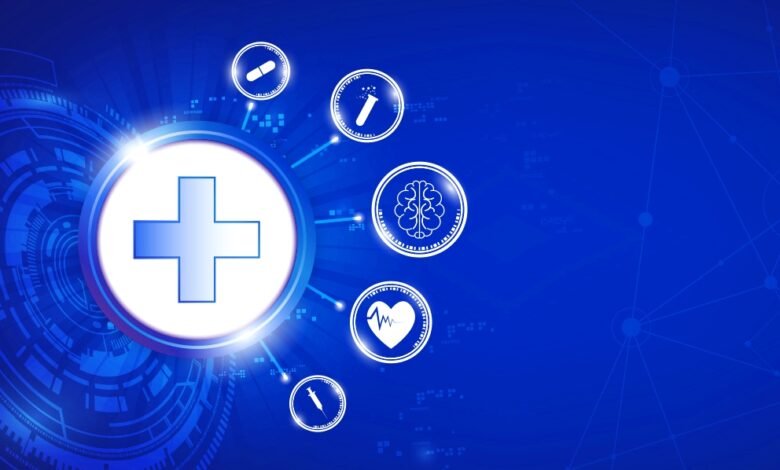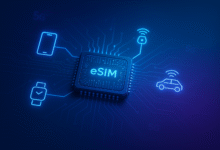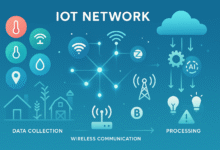Top IoT Medical Devices Used in German Hospitals in 2025
This article explores the top IoT medical devices transforming German hospitals in 2025, detailing their functionalities, benefits, and impact on modern healthcare.

The healthcare industry is undergoing a digital revolution, and Germany is at the forefront of adopting cutting-edge IoT medical devices to enhance patient care, streamline operations, and improve diagnostics. In 2025, German hospitals are leveraging the Internet of Medical Things (IoMT) to create smarter, more efficient healthcare ecosystems. These devices enable real-time monitoring, predictive analytics, and automated workflows, reducing human error and improving treatment outcomes.
This article explores the top IoT medical devices transforming German hospitals in 2025, detailing their functionalities, benefits, and impact on modern healthcare.
1. Smart Wearable Patient Monitors
What Are Smart Wearable Patient Monitors?
Smart wearable patient monitors are IoT-enabled devices that track vital signs such as heart rate, blood pressure, oxygen saturation (SpO2), and body temperature in real time. These wearables include smart patches, wristbands, and ECG monitors that transmit data directly to hospital systems.
Why Are They Important in German Hospitals?
German hospitals are increasingly adopting these devices for remote patient monitoring (RPM), allowing doctors to track patients’ health continuously—whether they are in a hospital bed or recovering at home. This reduces hospital readmissions and enables early intervention in case of abnormalities.
Key Benefits:
-
24/7 Health Tracking—Continuous monitoring without manual checks.
-
Reduced Workload for Nurses—Automates routine vitals collection.
-
Early Warning Systems—Alerts medical staff if a patient’s condition deteriorates.
Popular brands in Germany include Siemens Healthineers and Bosch Healthcare Solutions, which integrate AI-driven analytics for better diagnostics.
2. IoT-Enabled Infusion Pumps
What Are IoT-Enabled Infusion Pumps?
These are smart IV pumps that automatically adjust medication dosages based on real-time patient data. Connected to hospital networks, they ensure precise drug delivery and prevent overdosing.
How Are German Hospitals Using Them?
In 2025, German hospitals are using IoT medical devices like infusion pumps to:
-
Minimize human errors in drug administration.
-
Track medication history for better patient records.
-
Integrate with EHRs (Electronic Health Records) for seamless data flow.
Advantages:
✔Automated Dosage Adjustments—Responds to patient vitals.
✔Remote Control—Doctors can adjust settings from anywhere.
✔Alerts for Malfunctions—Prevents critical failures.
Companies like B. Braun and Fresenius Kabi lead the market with AI-powered infusion systems.
3. Connected Imaging Devices (Smart MRI & CT Scans)
What Are Connected Imaging Devices?
These include IoT-enhanced MRI, CT, and X-ray machines that upload scans directly to cloud-based platforms, allowing radiologists to analyze them remotely.
Impact on German Healthcare
Germany’s hospitals use these devices to:
-
Speed up diagnostics with AI-assisted image analysis.
-
Reduce waiting times by enabling teleradiology.
-
Enhance accuracy with machine learning algorithms detecting anomalies.
Key Features:
-
Cloud-Based Storage—Securely stores and shares medical images.
-
Predictive Maintenance—Alerts technicians before breakdowns.
-
Integration with AI Diagnostics—Helps detect tumors, fractures, and strokes faster.
Leading providers include Siemens MAGNETOM MRI and Philips IntelliSpace Portal.
4. Smart Hospital Beds with IoT Sensors
What Are Smart Hospital Beds?
These beds are embedded with pressure sensors, movement detectors, and weight monitors to track patient activity, prevent bedsores, and alert staff in emergencies.
Why Are They Essential in Germany?
With an aging population, German hospitals use IoT medical devices like smart beds to:
-
Prevent patient falls with motion alerts.
-
Monitor sleep patterns for better recovery tracking.
-
Automate patient repositioning to avoid pressure ulcers.
Top Benefits:
✅Fall Detection—Alerts nurses if a patient tries to get up unsafely.
✅Real-Time Data Logging—Updates EHRs automatically.
✅Enhanced Patient Comfort—Adjusts settings based on patient needs.
Brands like Stryker and Hill-Rom dominate this space in Germany.
5. IoT-Based Sterilization Robots
What Are Sterilization Robots?
These are autonomous UV disinfection robots that use IoT to navigate hospitals, sterilizing rooms and equipment to prevent infections.
Adoption in German Hospitals
Post-pandemic, Germany has prioritized hospital hygiene, deploying these robots to:
-
Reduce HAIs (hospital-acquired infections).
-
Operate autonomously with minimal human intervention.
-
Track disinfection cycles for compliance.
Why They Matter:
✔99.9% Pathogen Elimination—Uses UV-C light for deep cleaning.
✔IoT Connectivity—Schedules cleanings based on room usage.
✔Cost-Efficient—Reduces manual cleaning labor.
Companies like Xenex and Siemens provide advanced IoT sterilization solutions.
6. Remote Surgery Assistants (Tele-Robotic Systems)
What Are Remote Surgery Assistants?
These are IoT-powered robotic systems that allow surgeons to perform minimally invasive procedures remotely using real-time data and haptic feedback.
How German Hospitals Utilize Them
In 2025, leading German hospitals use these for:
-
Precision surgeries with minimal incisions.
-
Surgeon training via simulation modes.
-
Cross-hospital collaborations where experts assist from afar.
Key Advantages:
-
Reduced Human Error—Robotic precision enhances outcomes.
-
Global Expertise Access—Surgeons can consult worldwide.
-
Faster Recovery—Minimally invasive techniques reduce healing time.
The Da Vinci Surgical System and Medtronic Hugo RAS are widely adopted in Germany.
7. AI-Powered IoT Defibrillators
What Are Smart Defibrillators?
These are connected AEDs (automated external defibrillators) that use IoT to guide untrained staff during cardiac emergencies while transmitting patient data to doctors.
Usage in German Emergency Care
German hospitals deploy them to:
-
Improve response times in cardiac arrests.
-
Provide real-time CPR feedback.
-
Automatically alert emergency teams.
Why They Save Lives:
⚡Step-by-Step Voice Guidance—Helps bystanders assist effectively.
⚡Data Transmission—Sends ECG reports to doctors instantly.
⚡Predictive Alerts—Warns of potential heart failures.
Top models include Philips HeartStart and Zoll AED 3.
Conclusion
The integration of IoT medical devices in German hospitals is revolutionizing patient care, operational efficiency, and diagnostic accuracy. From smart wearables to AI-powered surgical robots, these technologies are setting new standards in healthcare.
As Germany continues to lead in digital health innovation, the adoption of IoMT (Internet of Medical Things) will only grow, ensuring better outcomes for patients and healthcare providers alike.
Are you looking to implement IoT healthcare solutions? Stay ahead by embracing these cutting-edge technologies in 2025!











